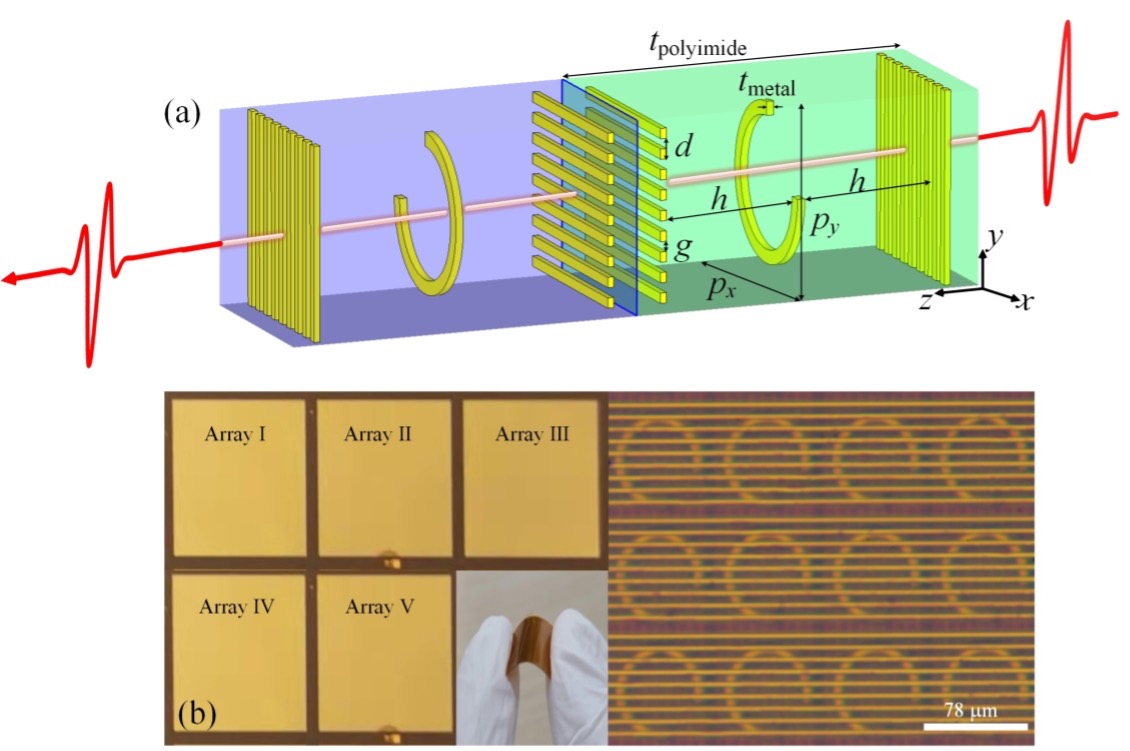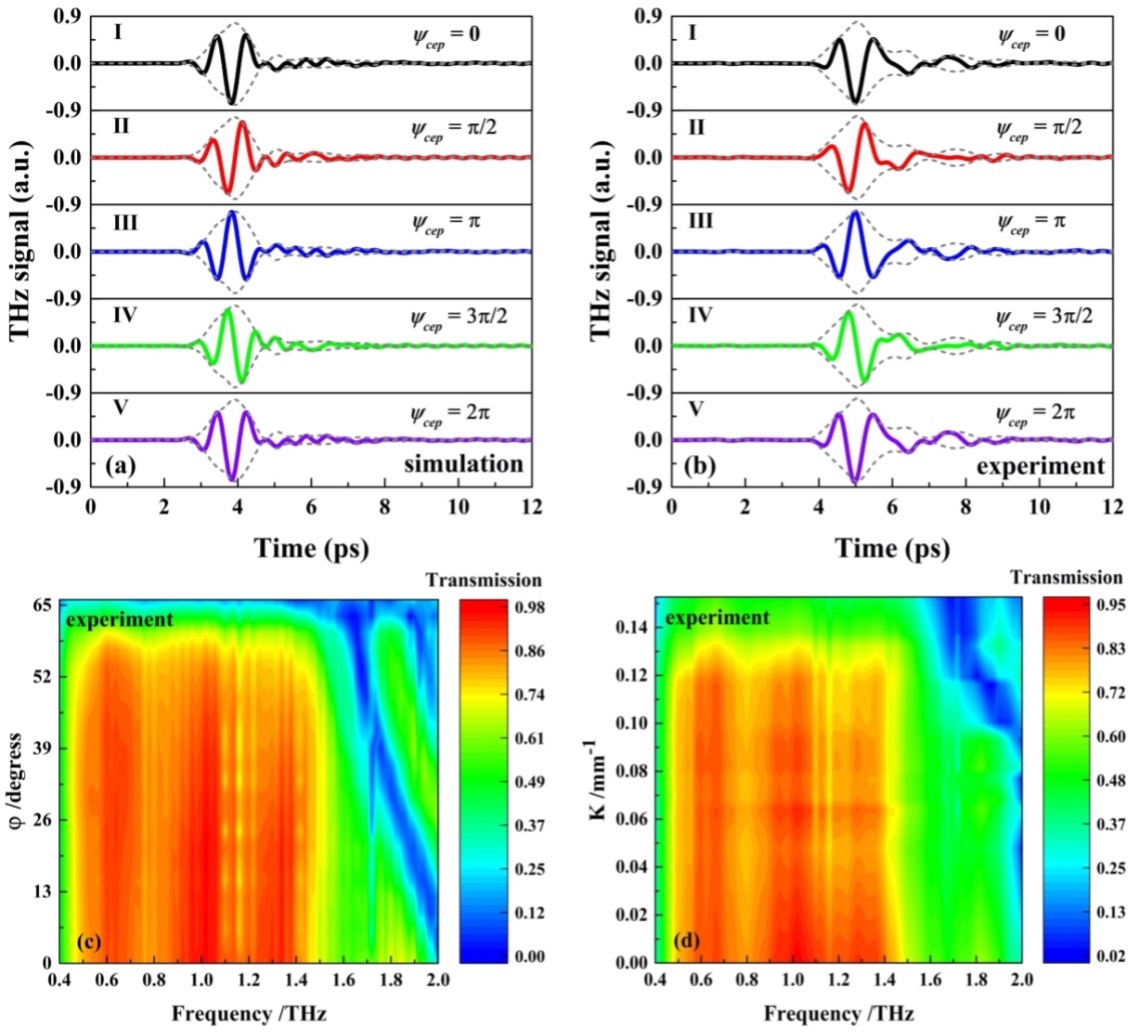Scientists Propose Flexible THz Carrier-Envelope Phase Shifter Based on Metamaterials
The ability to manipulate terahertz (THz) waveform is important for its applications. Despite rapid progress in metamaterials (MMs), the carrier-envelope phase (CEP) control for THz pulse is still challenging due to its broadband feature. THz scanning tunneling microscope (THz-STM), as an emerging technique combining both high temporal and spatial resolution, imposes additional requirements.
A research team led by Prof. WANG Tianwu from the Aerospace Information Research Institute (AIR), Chinese Academy of Sciences (CAS) proposes an ultra-thin THz CEP shifter composed of different MM arrays, which can modulate the CEP of broadband THz pulses in the sub-wavelength thickness range and maintain the electric field polarization (Figure 1a, b). The study was published in Advanced Optical Materials.
The CEP shifter is based on a specified split-ring resonator (SRR) with a pair of cross-oriented gratings to enhance the transmission efficiency. The CEP shift was realized by resonance phase and Pancharatnam-Berry phase of SRR, which can be shifted as high as 2p. When the incident pulse was modulated by different MM arrays in turn, the change of temporal waveforms of the THz pulse under different CEP values is clearly observed by THz time domain spectroscopy system (THz-TDS), which is in good agreement with the simulation results (Figure 2a, b).
The research team also verifies that that the CEP shifter has good robustness under wide-angle incidence and large deformation of sample (Figure 2c, d). Compared to the complex THz CEP controller composed of different parts, the proposed CEP shifter is ultra-thin, flexible, with low insertion loss and easy to install and operate, which is expected to be used as a key component for THz-STM.
The design scheme can also be applied to other frequency bands by appropriately scaling the geometry parameters of the structure. In addition, the proposed CEP shifter will allow investigation of the CEP dependence of THz matter interactions.

Figure 1. a) Perspective view of the unit cell of array. b) Overall and local optical images of the CEP shifter from top view, and flexibility of the CEP shifter demonstrated by manually bending the sample. (Credit: AIR)

Figure 2. (a, b) Changes of THz temporal waveform corresponding to different CEP values obtained from simulation and experiment; (c, d) Effects of wide-angle incidence and sample bending deformation on CEP shifter performance. (Credit: AIR)



News & Events